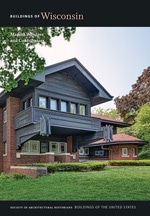
In 1892, miners discovered an enormous lode of high-grade, soft iron ore in northeastern Minnesota’s Mesabi Range, bringing an economic boom to the nearby city of Superior. By 1900, the Lake Superior region supplied three-quarters of the nation’s iron, and the city of Superior became a major port for shipping ore to eastern markets. The leader in the area’s mining boom was the U.S. Steel Corporation, which acquired all the means necessary for producing and marketing steel, including the Duluth, Missabe and Iron Range Railway (DM&IR). A part of a never-completed new railway line was this bridge erected by the DM&IR. The 2,189-foot bridge has two steel decks, the upper one for wagons and automobiles and the lower one for the railroad. The highway deck incorporates a 23-foot timber floor and a 6-foot sidewalk. The entire Warren through-truss structure consists of thirty-two spans between concrete abutments. The spans range from 31 to 150 feet, the largest being a 155-foot swing span, which pivots on a horizontal plane around a vertical axis to allow ships to pass on the St. Louis River.














